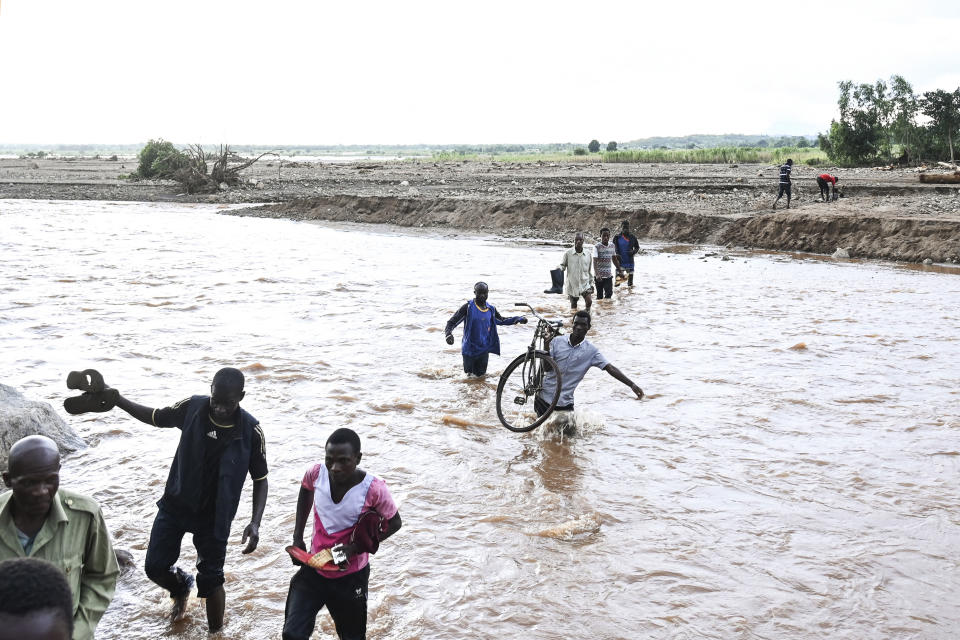African nations consider swapping debt for climate funding
MOMBASA, Kenya (AP) — African countries saddled with debt and ravaged by losses and damages from extreme weather events like cyclones, drought and extreme temperatures have agreed to consider swapping debt to invest in climate action in a meeting of finance ministers in the Ethiopian capital.
The “debt-for-climate swap” option is an economic tool that allows a country’s debt to be reduced in exchange for commitments on green investments. It was among several green financing alternative models discussed at the ongoing United Nations conference that supporters say would boost funds to adapt to climate harms, protect nature and finance local communities.
It comes as many African nations are battling with the effects of extremely costly climate change-fueled weather events like the ongoing drought in eastern Africa that has killed thousands and decimated livelihoods reliant on rain-fed agriculture and the aftermath of the devastating Cyclone Freddy that's left hundreds dead and thousands of others displaced.
Egyptian finance minister Mohamed Maait said that his country is one of many that is now having to add heavy climate costs to budgets stretched thin by external debt — which takes up to 17% of countries' spending in some cases — and other basic needs.
“What am asking every day and every hour is where do I get the money to protect our people from climate extremes,” Maait said, saying borrowing was often the only option for many countries.
Yet “many countries simply cannot access international financial markets because of rising interest rates,” Hanan Morsy, the chief economist of the U.N. Economic Commission for Africa told the roundtable Monday evening. Morsy supported the debt-for-climate swap option, adding that private sector investments in climate finance are lower in Africa than in any other part of the world.
Ministers also discussed bonds that would help increase private financial flows as well as “blended finance” models that would combine development funds and private capital as potential solutions for climate funding.
Interest in green financing has been growing, along with criticism that current mechanisms don't work for countries ravaged by climate extremes but have contributed little to the planet-warming emissions in the atmosphere.
In 2022 the International Monetary Fund established a $50 billion climate loan pot to help low and middle-income nations access affordable and longer-term financing to respond to long-term shocks associated with climate change. Rwanda became the first African nation to receive a loan of $319 million.
Another $50 billion pot pledged by the World Bank is only sending around 5% of its funds to the ten most climate vulnerable countries, a recent study by the Center for Global Development found. Four of the ten most vulnerable nations identified were in Africa.
The roundtable coincided with the Green Climate Fund board meeting which ended Monday with the approval of over $580 million in new climate finance for developing nations.
___
Associated Press climate and environmental coverage receives support from several private foundations. See more about AP’s climate initiative here. The AP is solely responsible for all content.





